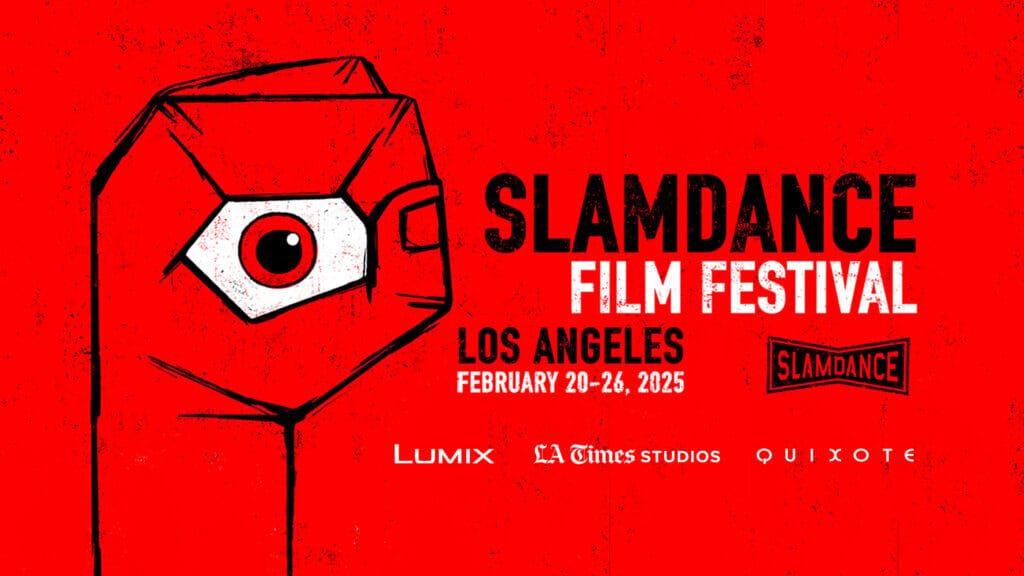
Slamdance 2025, the indie film alternative to Sundance 2025, is a far different creature from previous editions of the festival. This year’s edition started at a different time than this year’s Sundance. Whereas Sundance 2025 has already come and gone, this year’s Slamdance opened its festivities on February 20, 2025 and is still going on as of this writing. Moreover, in-person screenings are taking place from now on in Los Angeles, California instead of last year’s location of Park City, Utah.
Given the day this piece comes out, attending in-person screenings will probably not be doable for many broke-ass readers. And that’s even before we get to the fallout from the recent Los Angeles fires and the recent spate of airline crashes. Fortunately, there is a broke-ass friendly alternative. Slamdance 2025 is now running virtually until March 7, 2025. For just $50 and a good Internet connection, you can stream any of the more than 100 films being shown at Slamdance 2025 as well as check out industry panels and events. Yes, not every Slamdance offering will be a winner. But at that price, the broke-ass viewer will have a lot of room to explore and even take cinematic chances. That’s more than you’d get at Sundance, where $50 buys you just two in-person screening tickets.
What follows is a tour through most of the programming sections of Slamdance 2025. The Spotlight section kicks things off, as Slamdance 2025’s Opening Night film can be found here.
If Los Angeles wildfires and reduced airplane safety weren’t enough worries for you, how about an environmental disaster lurking for decades off the Southern California coast? Daniel Straub and Rosanna Xia’s documentary “Out Of Plain Sight” began when researcher David Valentine discovered a corroded barrel on the seafloor which contained some truly hair-raising contents. Digging by Los Angeles Times journalist Rosanna Xia revealed Valentine’s corroded barrel was just one of the nearly half a million barrels of toxic waste quietly dumped into the ocean after World War II. Even if the barrels were no longer an eyesore to surface dwellers, it didn’t mean the contents of those barrels stopped creating problems for future generations.
Ntare Guma Mbaho Mwine’s documentary “Memories Of Love Returned” began with a 2002 car breakdown in a small Ugandan town called Mbrizi. There, Ntare met photographer Kibaate Aloysius Saalongo, whose body of work documented Mbrizian life for nearly five decades. The film follows the director’s efforts to mount a large-scale outdoor exhibition of Kibaate’s work and how the community reacted.
Madeleine Farley’s documentary “Fist Bump” recounts a case of social justice gone badly awry. Marcus Knight may have cerebral palsy and autism, but he still harbored dreams of working on Broadway. Those dreams came crashing down when Saddleback College administrators accused him of committing acts of “sexual misconduct.” The acts in question were a fist bump and Knight’s taking of selfies in the school cafeteria. Horrifyingly, Knight was not allowed access to the tools that could prove his innocence.
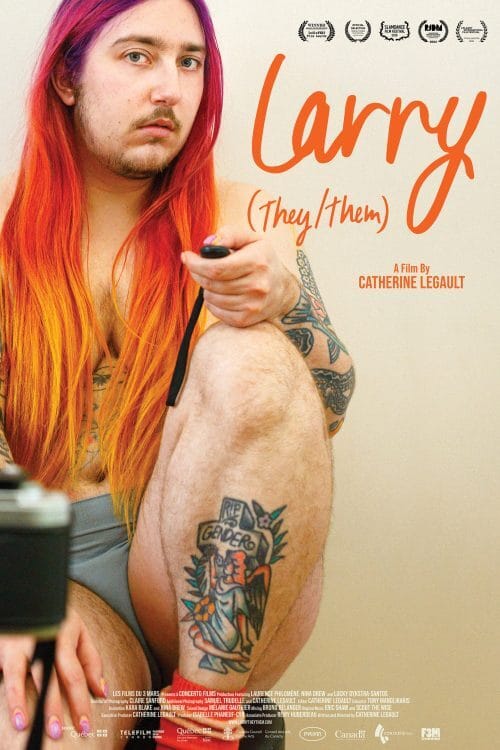
This writer can’t promise that this year’s Breakouts section will feature an early work by the next Russo Brothers. But it’s possible that at least a few of the films in this section could eventually leave the festival circuit behind for an appearance at the proverbial theatre near you.
Do you remember the DeBarges’ hit song “Rhythm of the Night?” That Detroit family of musicians seemed to be the next Jacksons. Youngest son James DeBarge was even Janet Jackson’s first husband. So how did this family go from the heights of producing chart-topping songs for Motown to living in RVs on the Los Angeles streets? Matthew Siretta answers these questions with the documentary “DeBarge.”
How do you earn enough money to pay your back rent when a giant version of yourself on the front lawn blocks any of your attempts to leave? The reclusive Merl thinks the solution is taking in a roommate willing to pay the needed money in advance. Older loner Larry seems to be that ideal roommate, but he also has a hidden agenda. See what happens next in Cory Santilli’s “In The Mouth.”
Catherine Legault’s documentary “LARRY (they/them)” takes viewers into the world of young non-binary trans photographer Laurence Philomene. Using the process of putting together their autobiographical monograph “Puberty,” Philomene displays their candor about their personal journey in finding self-affirmation and celebrating their refusal to conform.
Far different portraits of nonconformity can be found in many of Slamdance 2025’s Documentary Features and Shorts offerings.
Meet Los Angeles pirate radio station KBLT, the subject of Sue Carpenter’s “40 Watts From Nowhere.” Located in the apartment of a Silver Lake-based young music lover, the station eventually became a 24/7 operation which had both the Red Hot Chili Peppers performing live, and DJ gigs from the likes of Keith Morris, Don Belles, and Mike Watt.
Up north on California’s Mount Shasta, person(s) unknown dug a 60- (or 63- depending on who you ask) foot hole. Why? Theories have ranged from attempted illicit gold mining to a quest to find evidence of the existence of Lemuria. Elijah Sullivan’s “The Hole Story” recounts these strange theories, but any truths to be found here is left up to the viewer.
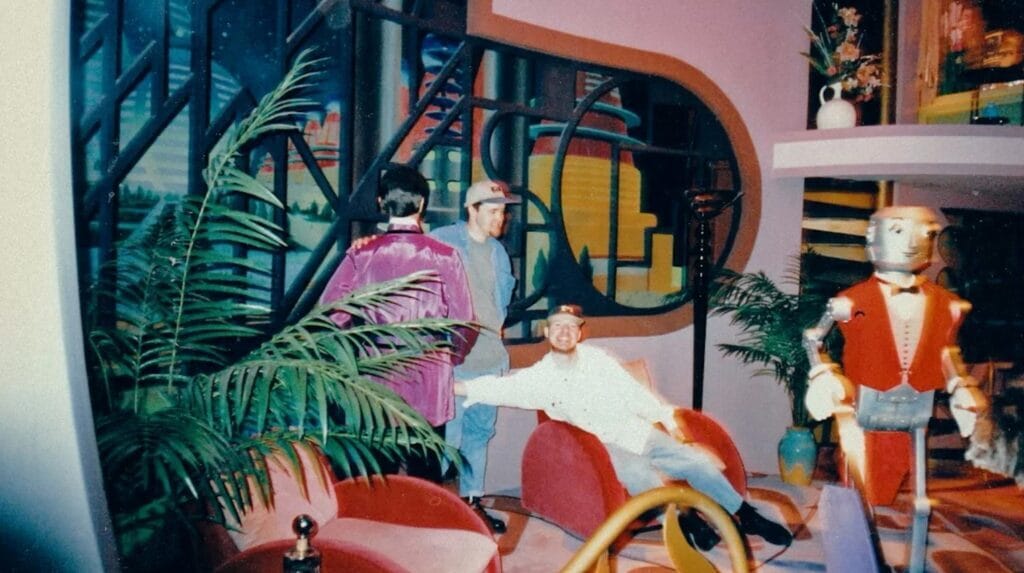
Stolen Kingdom
A different sort of mystery provides the impetus for Joshua Bailey’s “Stolen Kingdom.” Who stole a nearly half-a-million dollar animatronic named Buzzy.off the grounds of Walt Disney World? The answer involves understanding the different flavors of urban explorers checking out the abandoned areas of amusement parks, which is where Buzzy was located before the theft.
Understanding might also be called for in Nick Beaulieu’s semi-personal political film “My Omaha.” The filmmaker traces his hometown’s collision between its support for the Orange Fascist’s first term and the rise of Black Lives Matter. That struggle winds up being personified by two subjects: Beaulieu’s father Randy, a fervent pro-Orange Felon supporter, and Black activist Leo Louis II, whose political ascension comes from guiding Omaha through turmoil in the wake of a protester’s death.
For a truly chilling portrait of systemic inhumanity, the viewer should check out Cameron S. Mitchell’s “Disposable Humanity.” The now forgotten Nazi Aktion T4 program had a goal of . killing off disabled people. But it also wound up serving as a training ground for the personnel and the equipment that would later be used to implement the Holocaust. Any parallels with the American right-wing’s fascist campaign against transgender people are definitely not coincidental.
“Disposable Humanity” is also part of the Unstoppable programming section. The selections present stories about the disabled that deal with far more than seeing how a disabled protagonist finds a way to lead a “normal” life.
The multiple sclerosis the protagonist of Case Jernigan’s animated short “Noggin” must deal with has so damaged their brain that their memories are fading. But the protagonist refuses to give up and builds a new place to never forget what’s left in their noggin.
Cosmo Rudd’s “Out Of Reach” gives viewers a taste of what it’s like to live independently despite having a disability. James and Sawsan are two best friends with disabilities who spend the day together. Doing simple tasks requires them to overcome obstacles created by their disabilities. But what exactly do they mean in practice by wanting to be independent?
Sarcastic teen Alex, the protagonist of Alex Dvorak and Katie North’s “Bad Survivor” should be put at the other end of the adaptation spectrum. Her cancer may have gone into remission but she’s not celebrating being back in the world. The habits of her hospital existence (e.g. the daily morphine drip and her listening to heart monitors) have become her security blanket. She’s also definitely Not Inspirational.
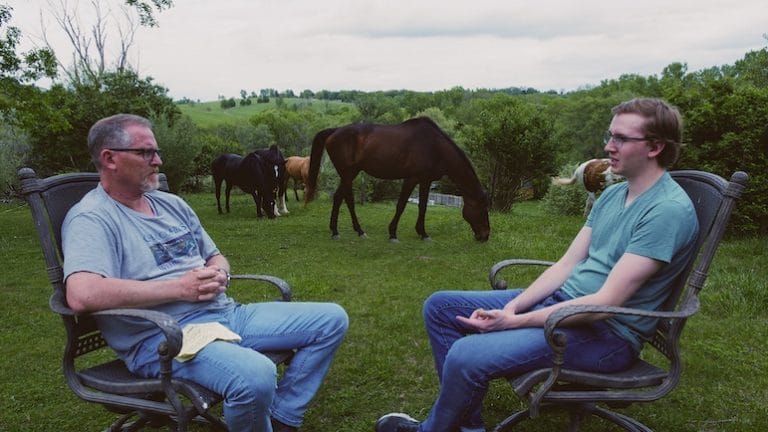
In Daisy Rosato’s “Possum,” a community grapples with a way of punishing resident artist Pinecone. When the artist lost his mind, he pummeled a possum to death. How does one process this therlocidal act and how does one decide on the proper form of punishment?
Adira, the protagonist of Jessica Senquiz’ “Promise To Stronger Days,” is suffering from a form of self-punishment. She wants to finally hook up with Jerome, yet a past trauma has left her unable to enjoy sex or even connect with others. How can flashbacks to her childhood help Adira find a path to moving on with her life?
Moving forward is not a problem for the films of the “6XTY” program. That’s because this is a collection of 1-minute long short films. For less time than watching an episode of “I Think You Should Leave,” you can watch the entire “6XTY” program.
Try, for example, “Cleanse” (the paranoid germaphobe in Dominic Lopez’ tale goes to tragically extreme lengths to clean himself of his supposed deadly infection), “Red Light Green Light” (Corey Grispo’s apparently nonsensical tale of a man quickly pressing red and green buttons and the real world consequences of his acts), or “A Jog In The Park” (the parkside encounter in Melissa Vitello’s film turns out to be something more than a man meeting an ex-girlfriend).
But for truly unconventional filmmaking, Slamdance’s Animation section is worth a look. Whether the animation medium is cel or puppets, delivering traditional narrative is less interesting than these shorts’ trying out some unconventional experiments.
A recycling symbol might be the unofficial mascot of Michael Granberry’s “Les Betes.” This short film was the product of both the pandemic lockdown and the creative reuse of things from earlier unrealized projects that were rotting away in storage. The result is this Ladislas Starevich-like tale of a group of animated objects providing the entertainment for a king’s dinner. However, a resentful jester’s jealousy and the nobles’ own cruelties soon cause the evening to take a far darker turn.
If you’ve seen and heard enough television, you’re likely to be familiar with the raw material for Badminton Plus’ “Mousse Crust.” But what this short does is take seconds-long television snippets of everything from old commercials to talk show excerpts and then splices and redraws them to create the feeling of watching ADHD-like channel surfing.
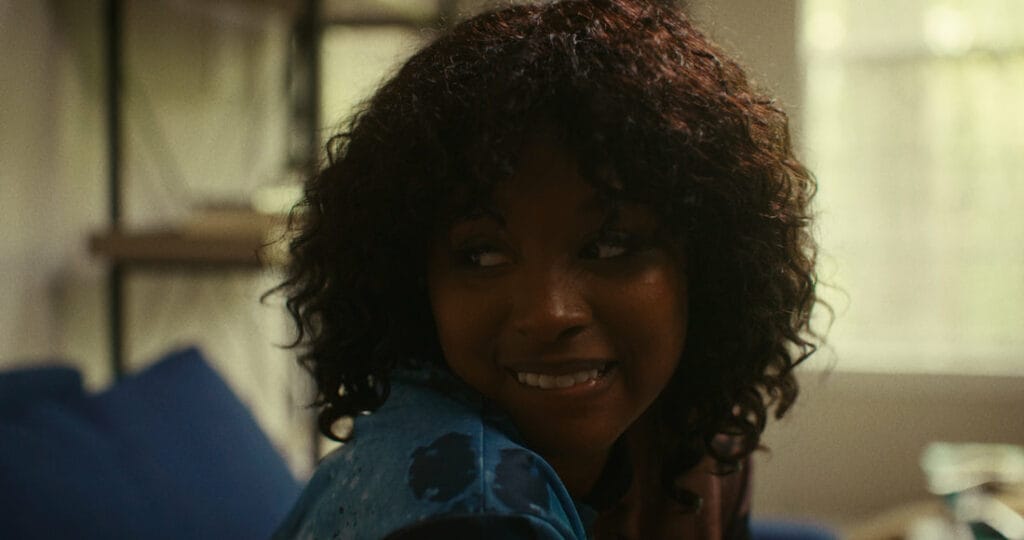
Promise To Stronger Days
A greater ADHD-like effect will befall viewers watching Meejin Hong’s “Deluge.” Using Adam Beckett’s pioneering animation technique, each frame of Hong’s film is created by a process of drawing something on the frame, photographing it, drawing something new on the frame, photographing that, and then repeating as often as needed. The result is a film where the objects depicted constantly compete for space while also trying to find a new sense of balance as more objects are added.
For those wanting to turn the Possibilities Of Cinema dial up to 11, viewers should check out the Experimental section. One way to approach the offerings is to see which festival catalog descriptions catch your fancy, and then take a “let’s see where this goes” attitude.
The short “Asset. Everything used. All as it used to be” from director Sophia Ioannou Gjerding may have begun with her grandmother accidentally causing a supposed silver spoon to vanish. From then on, the film considers such other issues as what we call heritage, how video games influence our relationship to objects, and the point when gathering turns into hoarding.
A comparatively more clearcut experiment unfolds in “Track_ing” from directors Chanyeol Lee, Hannah Cho, Samgar Rakym, and Aly Tynybekov. The setting is a train running on the Korea-Kazahkstan line. Analyzing the image data produced on the train, the information revealed by the pixel boxes manages to produce something resembling a narrative.
The titular “stroad” in Pablo Garcia’s “Stroad Movie” refers to a combination of street and road, a long stretch of durable material that connects destinies. Yet stroad markings also have the power to evoke dread or “direct” behavior. Could freedom be found in getting lost?
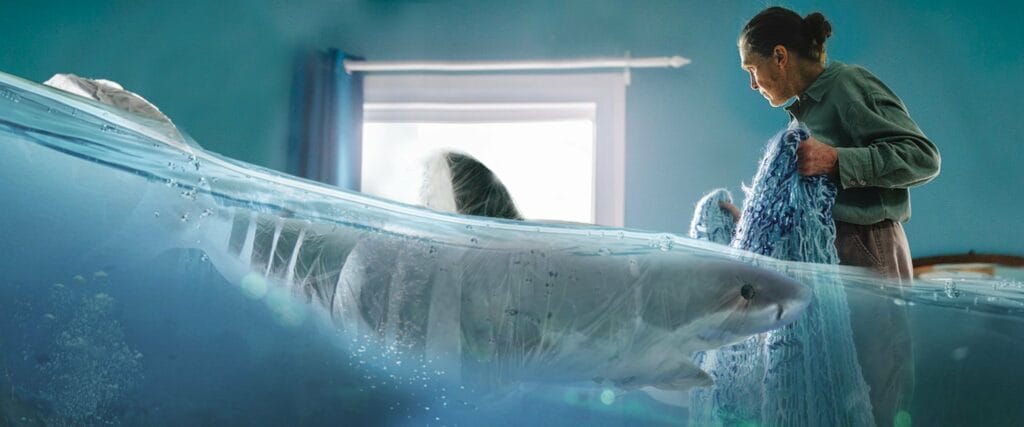
The Sea Inside Her
For those who want to see films with beginnings, middles, and ends, the Narrative section offers that option. Some of the films here include “Ozzy Osbourne” as a spirit guide and a spiritual mashup of a classic of martial arts and Taiwanese cinema.
What do you do when a gate to the underworld suddenly appears in your laundromat? For debt collector Dunn, the protagonist of Woody Bess’ horror comedy “Portal To Hell,” it’s doing what he can to save his neighbor Mr. Bobshank from being dragged to Hell. But Dunn soon discovers that saving the doomed man isn’t as easy as sending someone else in his place.
On the other hand, the titular metal band in Jeon Ah-hyun’s “The Metal Band’s Guide To The Black Hole” wants to go through a portal to a dangerous dimension. “Ozzy Osbourne” says it’s the only way to obtain the head of a virgin ghost for their performance. The band members hope completing this quest helps them regain their mojo after a major onstage hair malfunction. But fighting off various other ghosts isn’t the only problem threatening to sink their quest.
Far more serious horrors await the grandmother protagonist of Alyx Duncan’s horror short “The Sea Inside Her.” Her “caring for her young grandchild” job just got more complicated by the physical manifestation of the older woman’s personal fears. What price will the grandmother pay when she fights to protect the child?
1980s Taiwanese teen Ming might also need protection during her sexual awakening. This precious moment is taking place during an adult film screening. Yet as the title of Birdy Wei-Tung Hung’s “A Brighter Summer Day For The Lady Avengers” suggests, what Ming needs might not be what others expect. The short’s odd title comes from its homage to the classic films Edward Yang’s “A Brighter Summer Day” and Chia-Yun Yang’s “The Lady Avengers.”
On the other hand, the desperate Mowanza of Yun Xie’s “Under The Burning Sun” can use all the help she can get. She’s traveling across her barren abortion-unfriendly country to . terminate her pregnancy in the abortion-friendly land of Iropus. But will she reach her destination or lose her bodily autonomy first?

Honey Kaha
Indigenous rebellion, either personal or political, mark several films in the Revolution section. Complement this attitude with a variety of inventive treatments on this subject, and you have a festival showcase.
Travel back to an alternate 1980s in TeWaiarangi Ratana’s “Honey Kaha.” This is a mockumentary about New Zealand’s first badass wahine action hero. Expect campy production values, over the top dialogue, and hilarious action sequences.
Juanchi Gonzalez and Janice Mejias’ serious documentary short “El Gobierno Te Odia (The Government Hates You)” takes a look at the work of artist and photographer Christopher Gregory Rivera. What connects the concept of “carpeteo” to illegal FBI and Puerto Rican Police surveillance of Puerto Rican pro-independence activists?
Yanga was the name of Mexico’s and America’s first liberator of African slaves. In Amaury Barrera and Audrey Del Piccolo’s “Yanga,” a young woman who’s suffered great pain and personal loss takes a transformative trip along the Oaxacan coast. Can she heal by connecting with the spirit of Yanga via her encounters with the ritualistic world and the power of community?
It’s unclear whether the DIG offerings will be available for streaming, as they appear to be digital experiences. The Episodic offerings this time around lean toward the unexciting. Nevertheless, whether the broke-ass reader wants to disagree with this writer or hunt for a film that the Netflix algorithm would never suggest for them in a million years, checking out Slamdance 2025 virtually is both an incredible bargain and a reward to those willing to be cinematically adventurous.
(For those seeking information about the films mentioned in this preview and more, go here. Slamdance Virtual Festival passes can still be ordered here.)
The post You Can Watch the Whole Slamdance Festival Virtually This Year! appeared first on Broke-Ass Stuart's Website.








